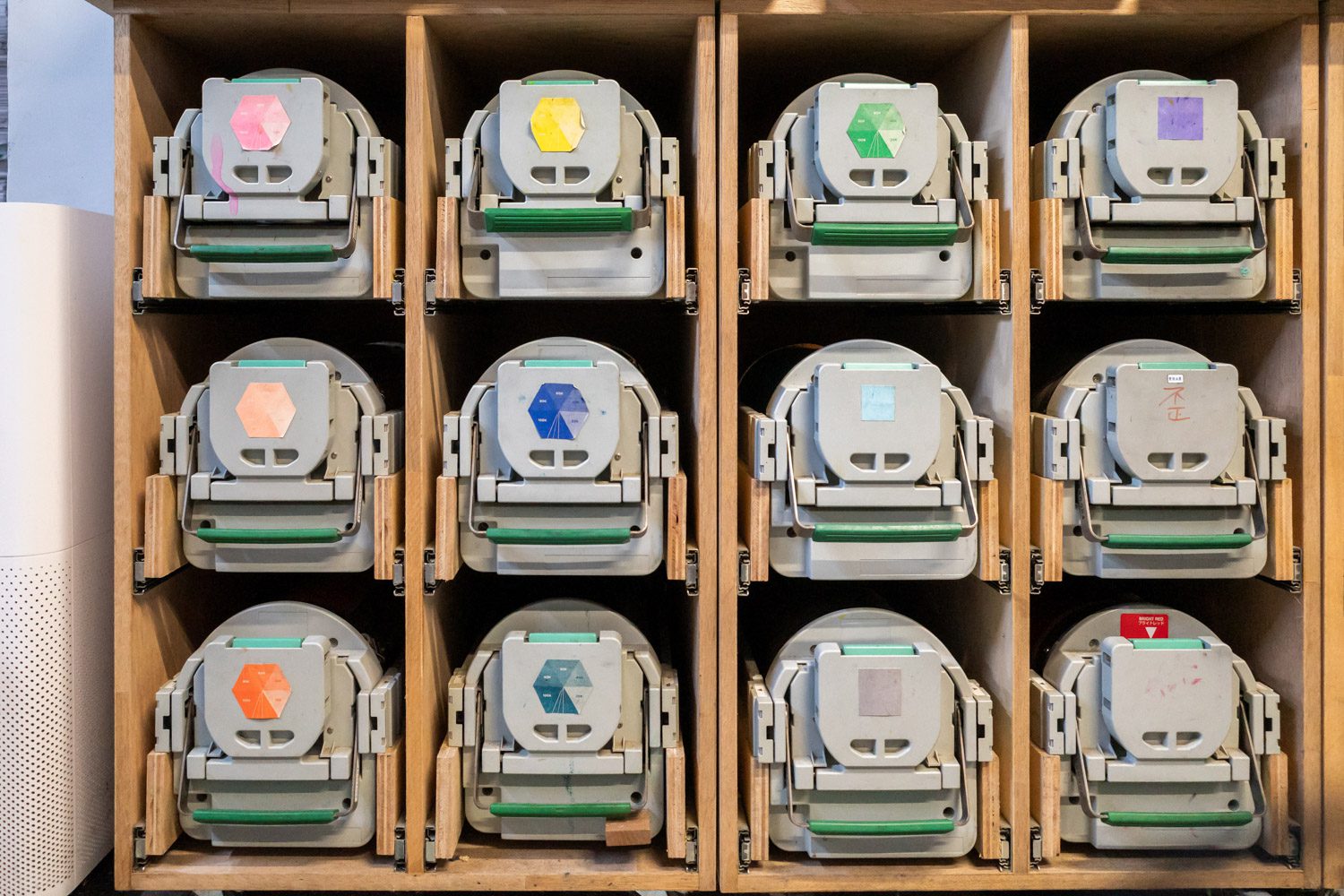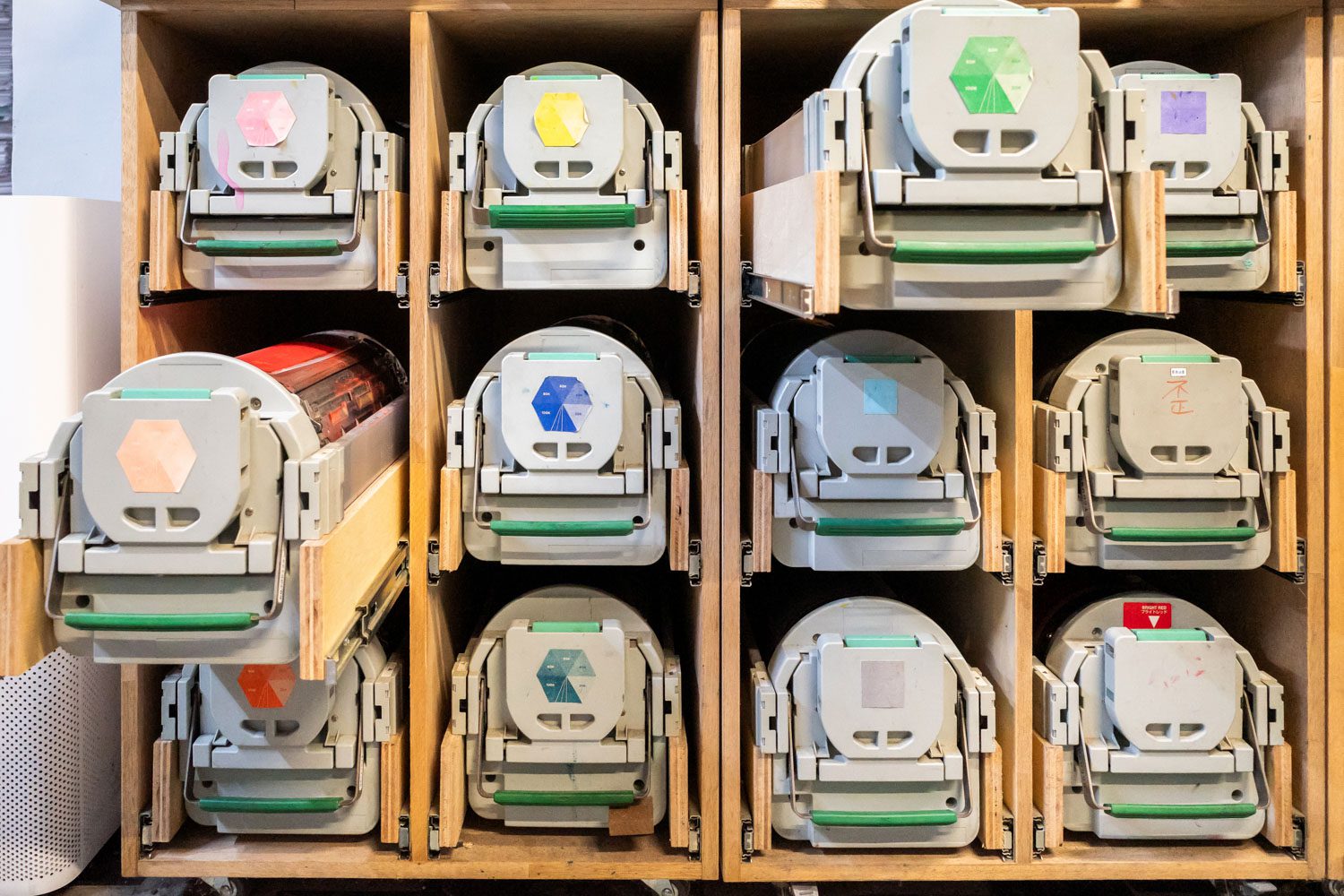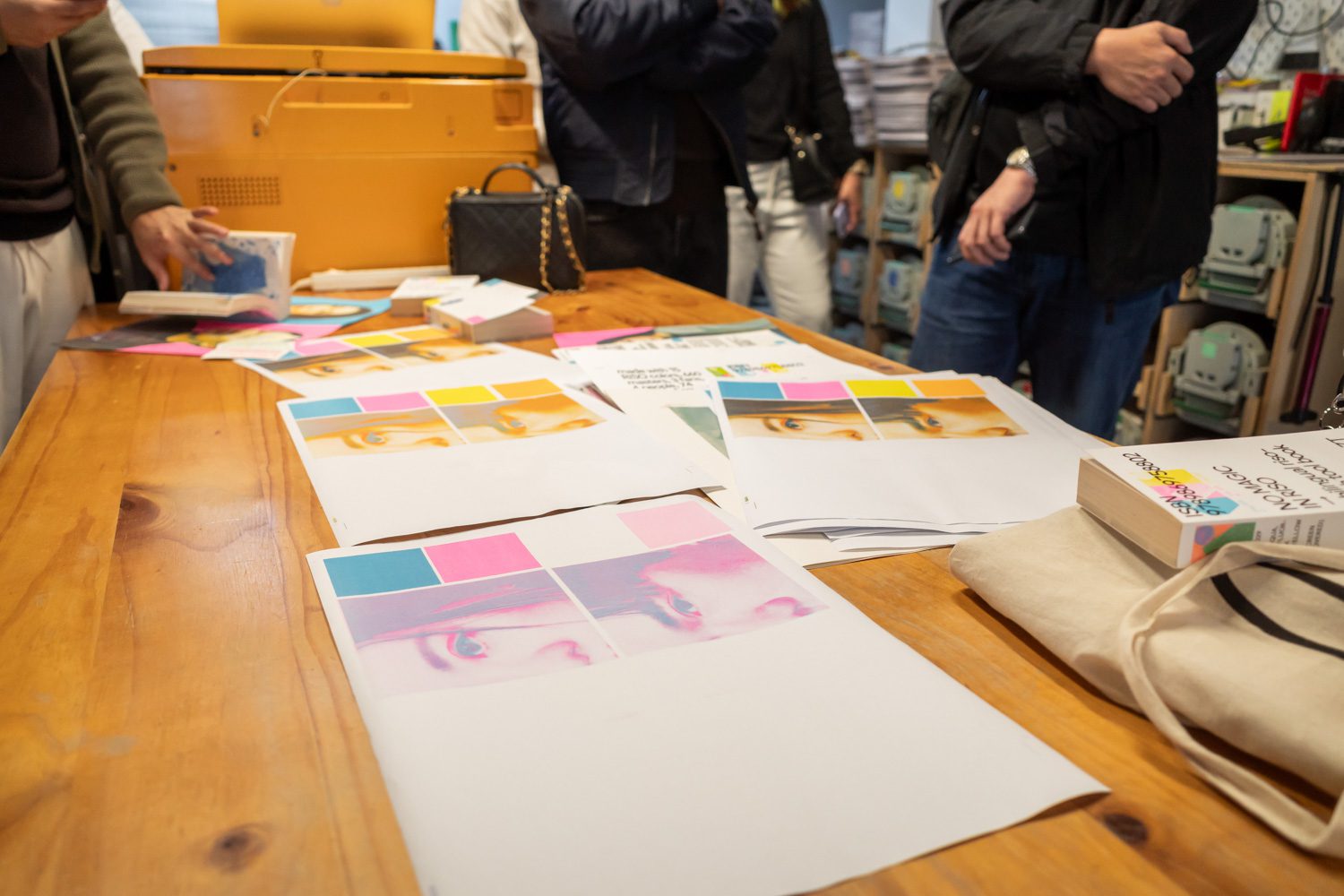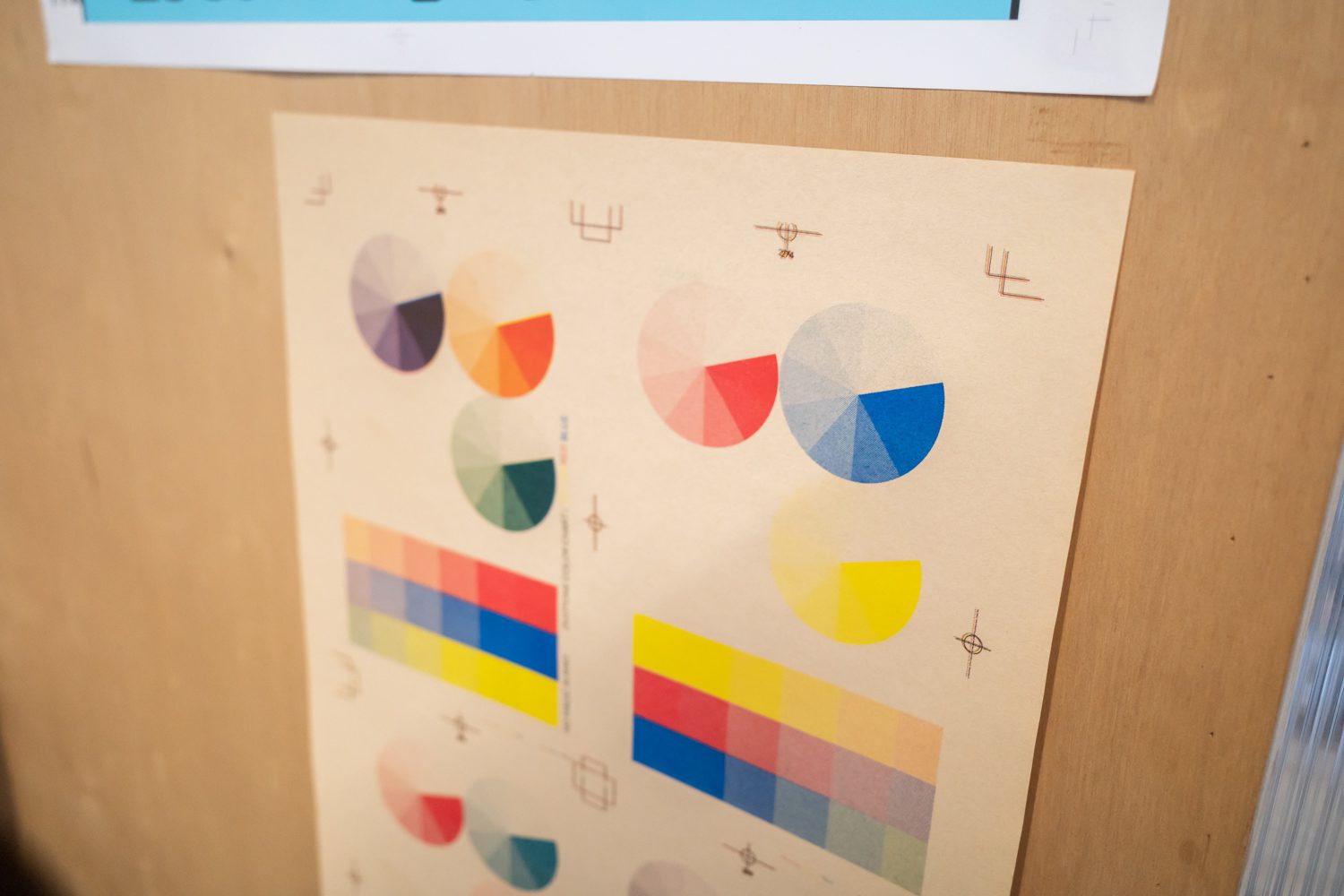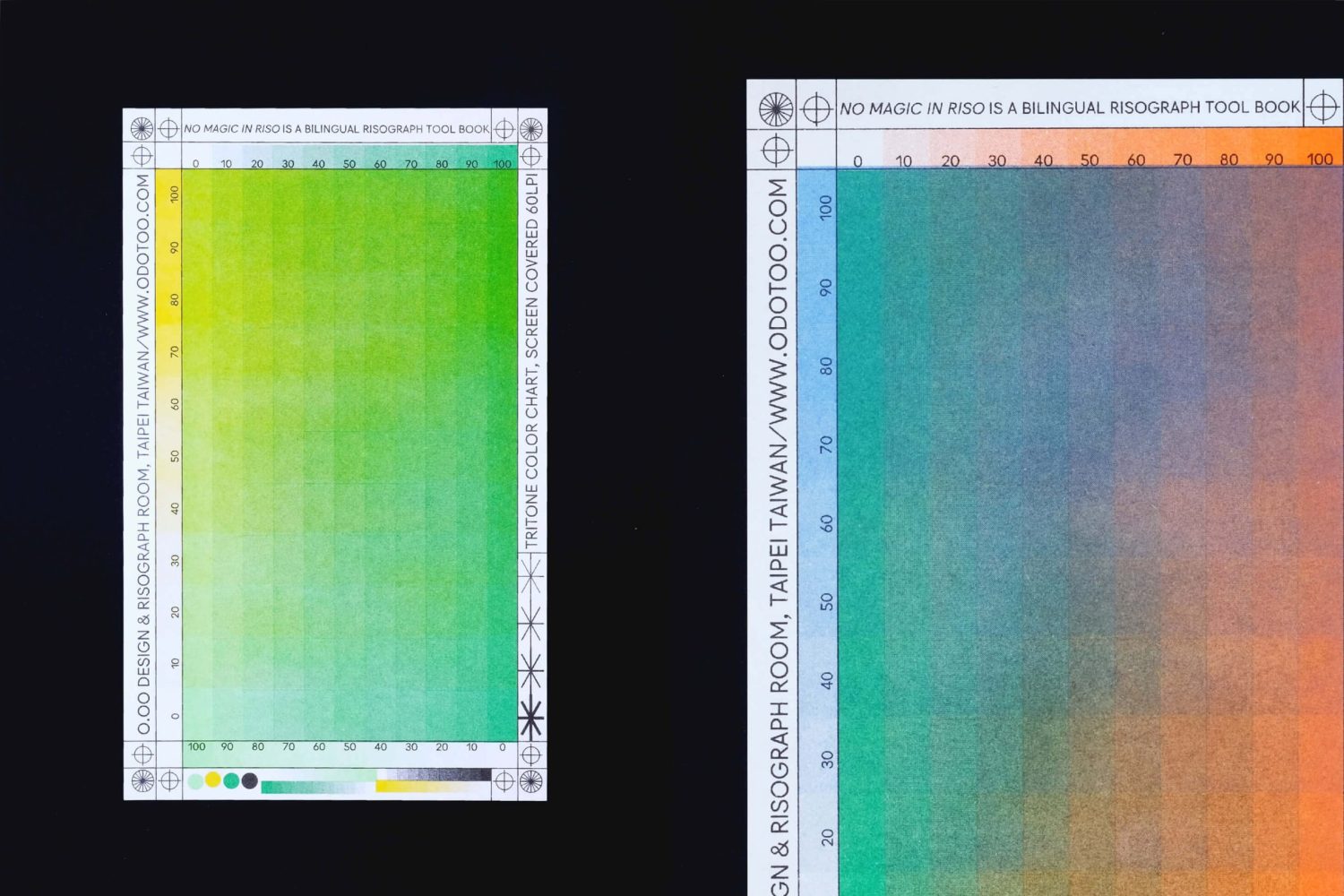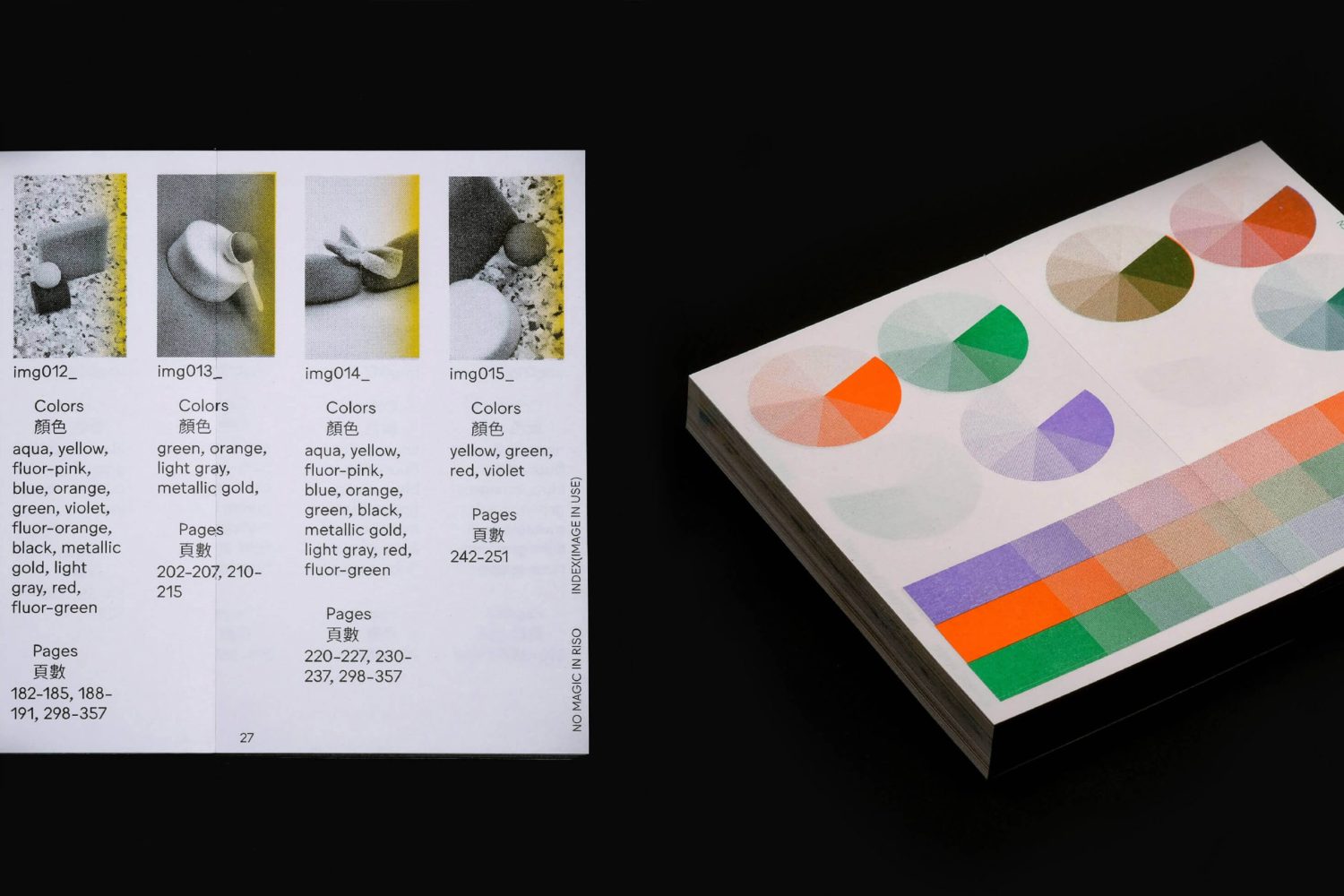ART4D HAD A CONVERSATION WITH PIP LU FROM O.OO STUDIO IN TAIWAN ABOUT THE CURRENT SITUATION OF PRINTS IN TAIWAN AND HER PASSION FOR RISOGRAPH WHICH HAS GAINED WORLDWIDE POPULARITY IN THE DESIGN COMMUNITY
TEXT: KITA THAPANAPHANNITIKUL
PHOTO: KITA THAPANAPHANNITIKUL EXCEPT AS NOTED
(For Thai, press here)
The Risograph is a printing method that emerged in the 1980s in Japan. Pioneered by the Japanese company Riso Kagaku Corporation, it boasts the capability to produce large quantities of prints, coupled with the distinctive charm inherent in its output. Although industrial printing techniques gradually replaced Risograph’s popularity over time, its intriguing print output—the result of the fusion of digital and analog technologies—has sparked a resurgence, particularly among artists and designers looking for alternative production methods.
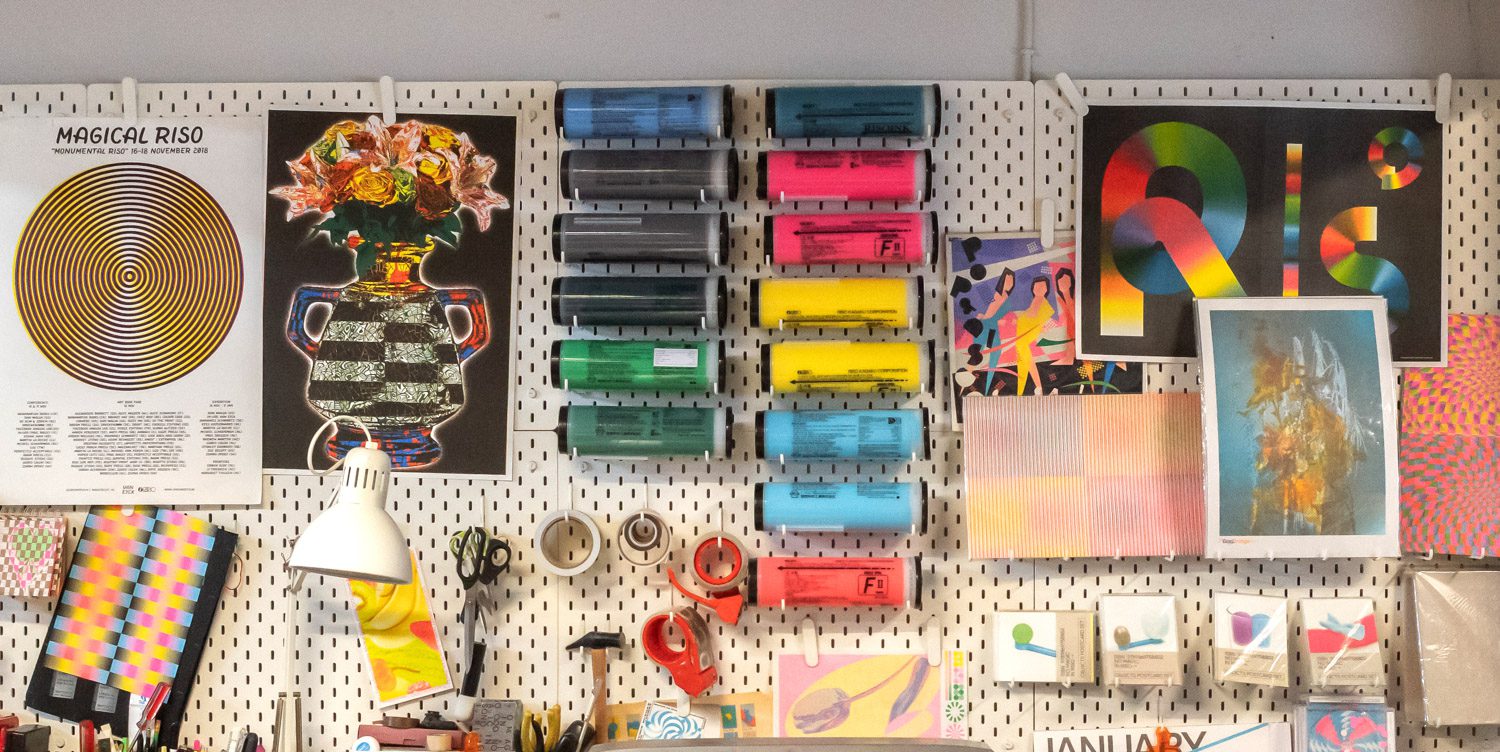
In late 2023, against the backdrop of ‘art4d PINNED PLACE’ event, which served as a platform for enthusiasts in design, architecture, and art to explore new horizons both in Thailand and abroad, we embarked on a journey to Taiwan. There, we had the privilege of meeting with Pip Lu, one of the founders of O.OO Studio, engaging in brief yet insightful conversations about the affinity for Risograph printing, its current status, and its prospective future. Additionally, we delved into the backstory of O.OO Studio’s publication, ‘No Magic in Riso,’ which emerged from a comprehensive two-year study and experimentation on the potential of Risograph printing. Spanning 360 pages, this book encapsulates a singular theme—the marvel of Risograph.

Photo courtesy of O.OO Studio
art4d: First of all, could you please share a bit about your background and the origins of O.OO Studio?
Pip Lu: I’m actually graduated from a field related to 3D animation. Unfortunately, It wasn’t what I expected, I found out later that I have no interest in the 3D animation process. Instead, I found that I was more interested in character design and 2D work. After graduation, I shifted to work in a website design studio for about a year.
My turning point came in 2016 when I visited Hong Kong and came across a postcard that caught my attention. It had a texture unlike any printed work I had seen before. When I flipped it over, I saw the text ‘risograph,’ which surprised me because, even though I was previously familiar with most printing methods like digital printing, silk screen printing, and offset, I had never heard of Risograph printing before.
When I came back to Taiwan from that trip, I started to Google about Risograph and discovered that it was a printing technique originating way back in the 80s and widely used by artists and illustrators in Europe since 2012. However, in Taiwan, Risographs were relatively unknown. This discovery inspired us to open a studio called O.OO Studio with Forty Liu, where we primarily focus on Risograph and expanded our work to include event design, experiential design, exhibitions, and even concerts.
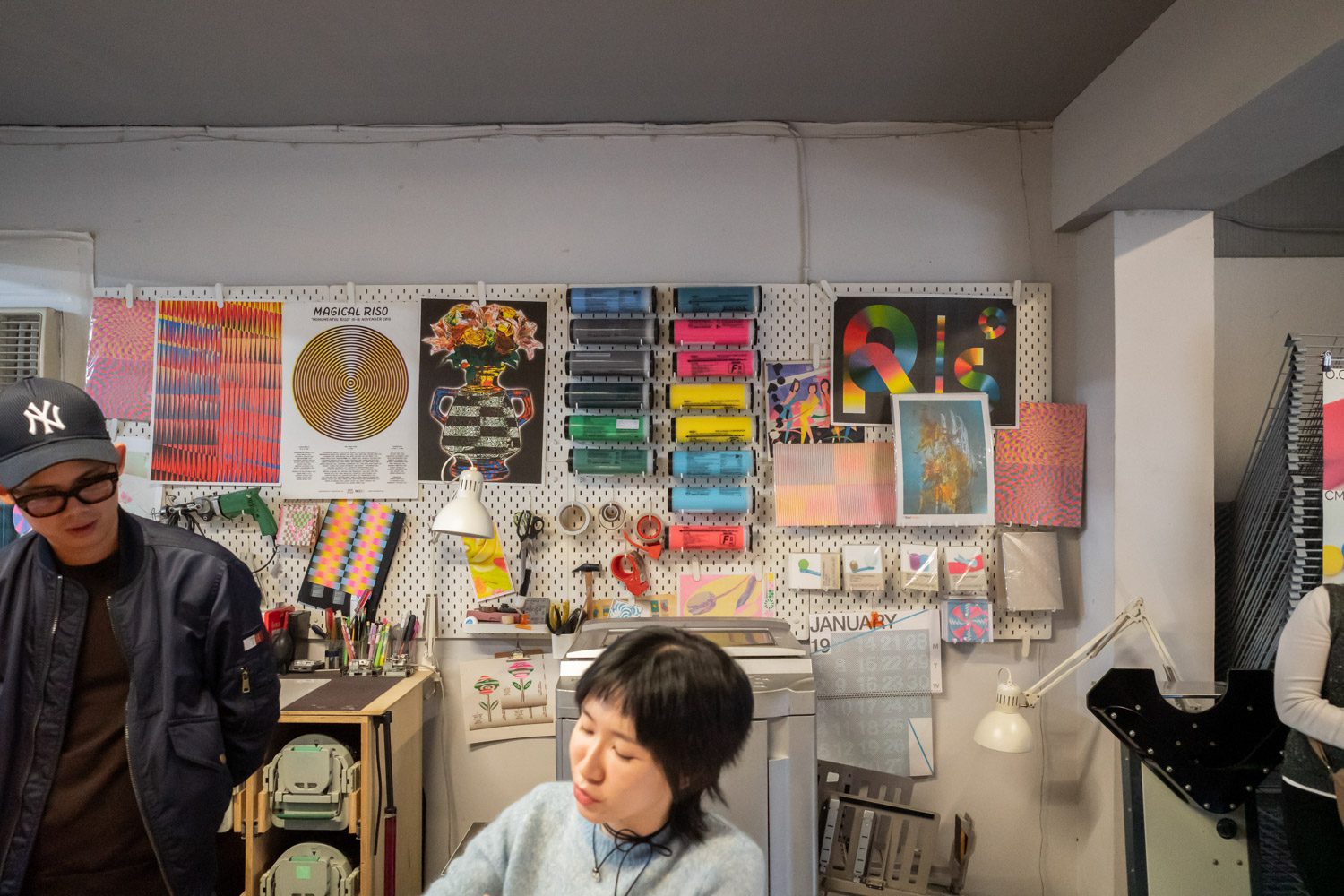
art4d: What is Risograph, and why are you interested in it?
PL: The Risograph is originally a printing method particularly associated with quantity and speed from its ability to print rapidly. For example, it was commonly used for printing the Bible or single-color flyers. Thus, during that time, the colors available for Risograph printing in the market were limited to basic ones such as black, green, red, and blue. However, we finally discovered a studio in Hong Kong who can produce a variety of unusual colors. We still visit this studio every year because, despite there are a various Risograph colors in the market , the actual color producer is relatively limited due to the difficult process of making colors, with base derived from soybean, a production method that is quite challenging.
Actually, I remember one time when we were returning to Taiwan. Because my luggage was filled with ink tubes since we usually buy a lot of ink at once since we don’t have many opportunities to fly to Hong Kong, we were stopped and inspected by the immigration bureau because the ink containers seemed suspicious and potentially hazardous from the inspector’s perspective. However, after explaining that it was just printing ink, they allowed us to go.


Anyway, what we find particularly fascinating about Risograph is its unique texture created through the overlapping of color pigments, resulting in a captivating and unpredictable outcome. It’s all about experience, and you have to do it repeatedly to comprehend its nature and eventually learn to control the color.
Also since I deal with various types of paper daily, I’ve developed some sense and instinct for using color and paper in the right way. I’m not sure how to articulate it tangibly, but I can feel the distinct ‘personalities’ of each paper type like people, we view each type of paper as being suited for different tasks, making each one unique in its own way.
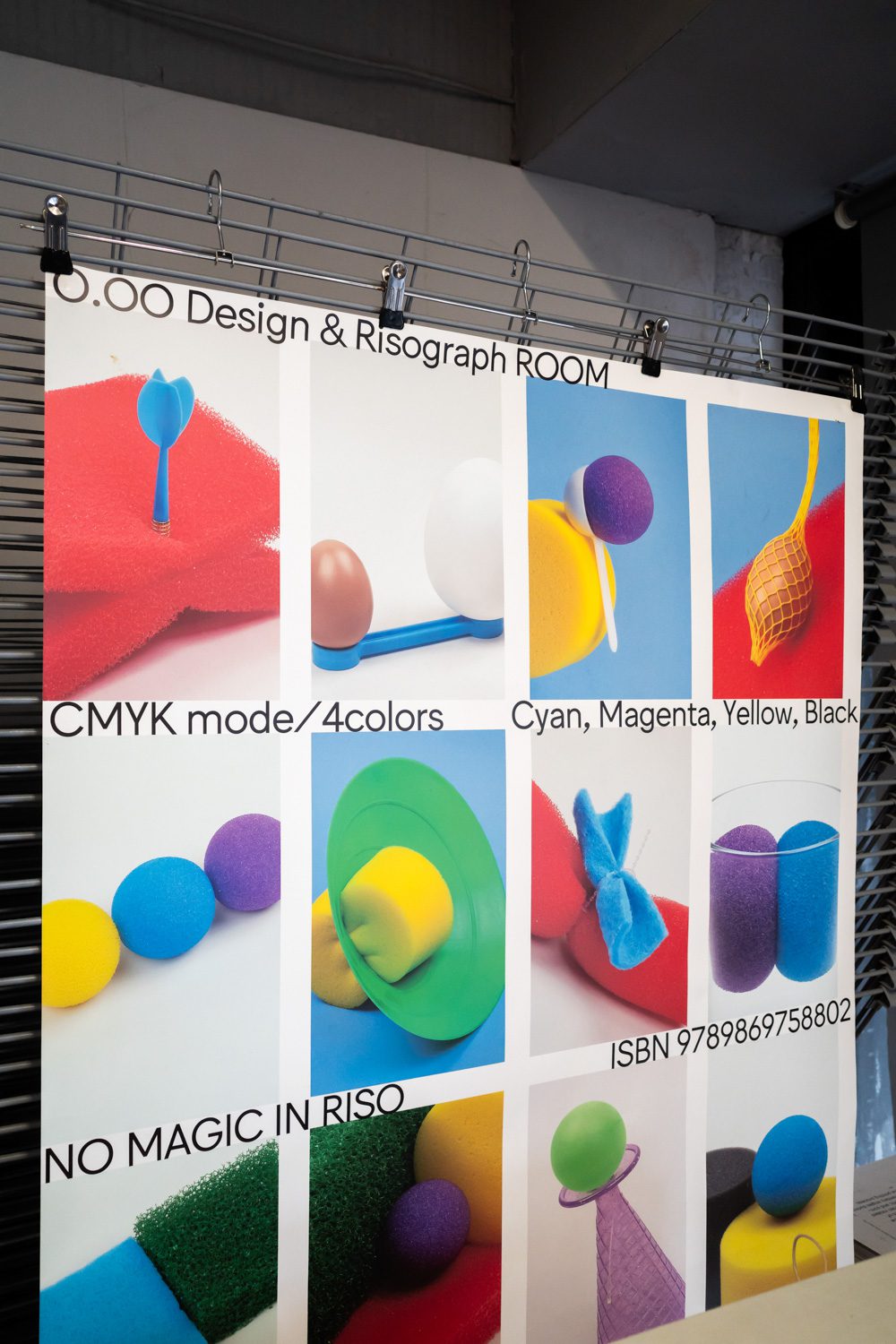
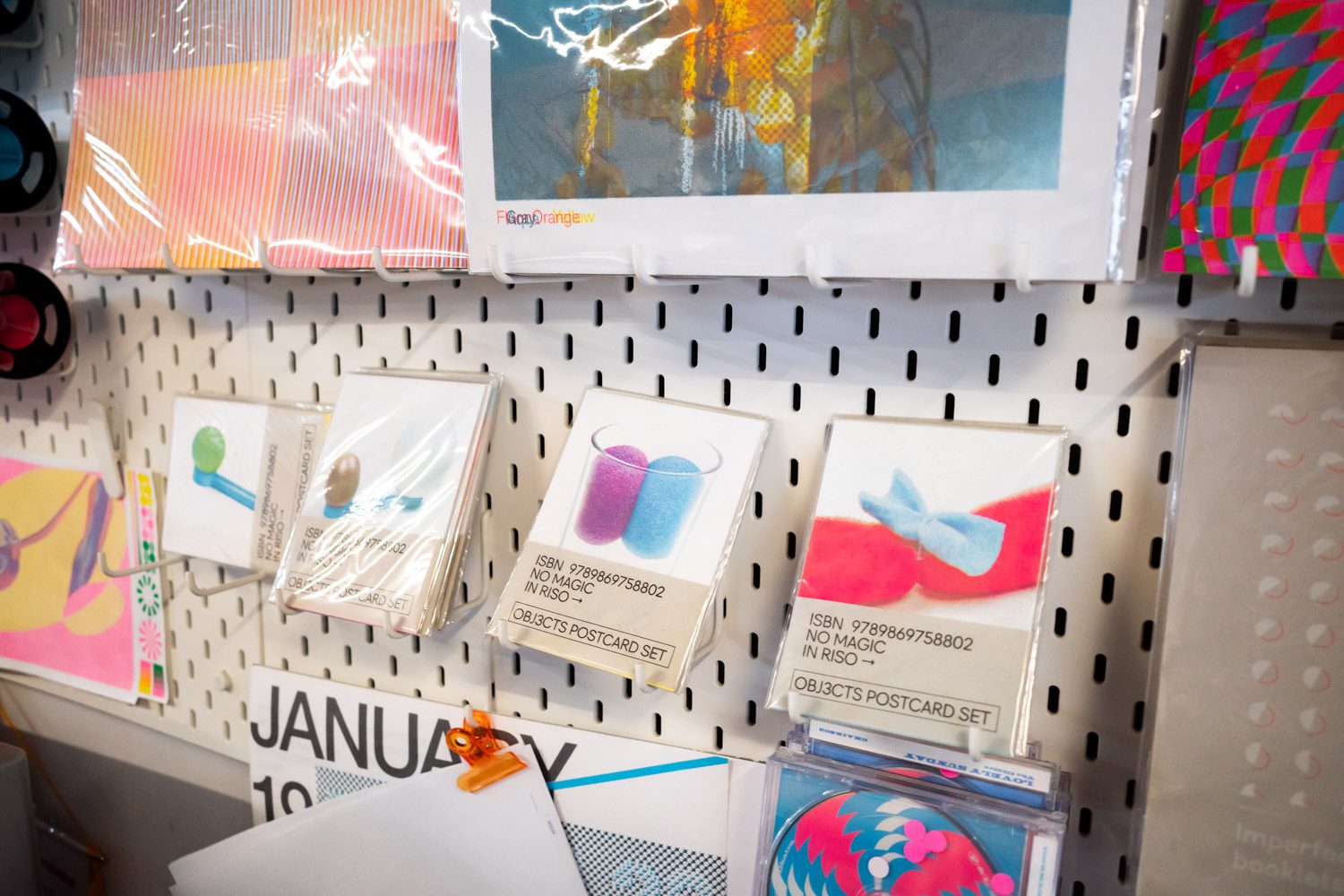
art4d: How is the current situation of the Risograph community in Taiwan?
PL: Apparently, the popularity of Risograph has once again started to increase worldwide in the last several years, giving rise to many communities of Risograph enthusiasts not only in Taiwan but also in Thailand, Korea, and other places. For me. Risograph bring us a lot of friends. Although the Risograph community is relatively small, and we are acquainted with almost all the Risograph studios in Taiwan, we are not certain about the exact number. We believe there are approximately five or six studios spread across different cities like Taipei, Taichung, and Tainan. These communities serve as platforms for sharing experiences and addressing problems encountered with the Risograph machine, along with the solutions they have tried and succeeded with. Most of the time, when the Risograph machine malfunctions, we readily seek assistance from our friends first, instead of contacting the machine supplier, as some issues are peculiar, and even the supplier may struggle to find a solution.
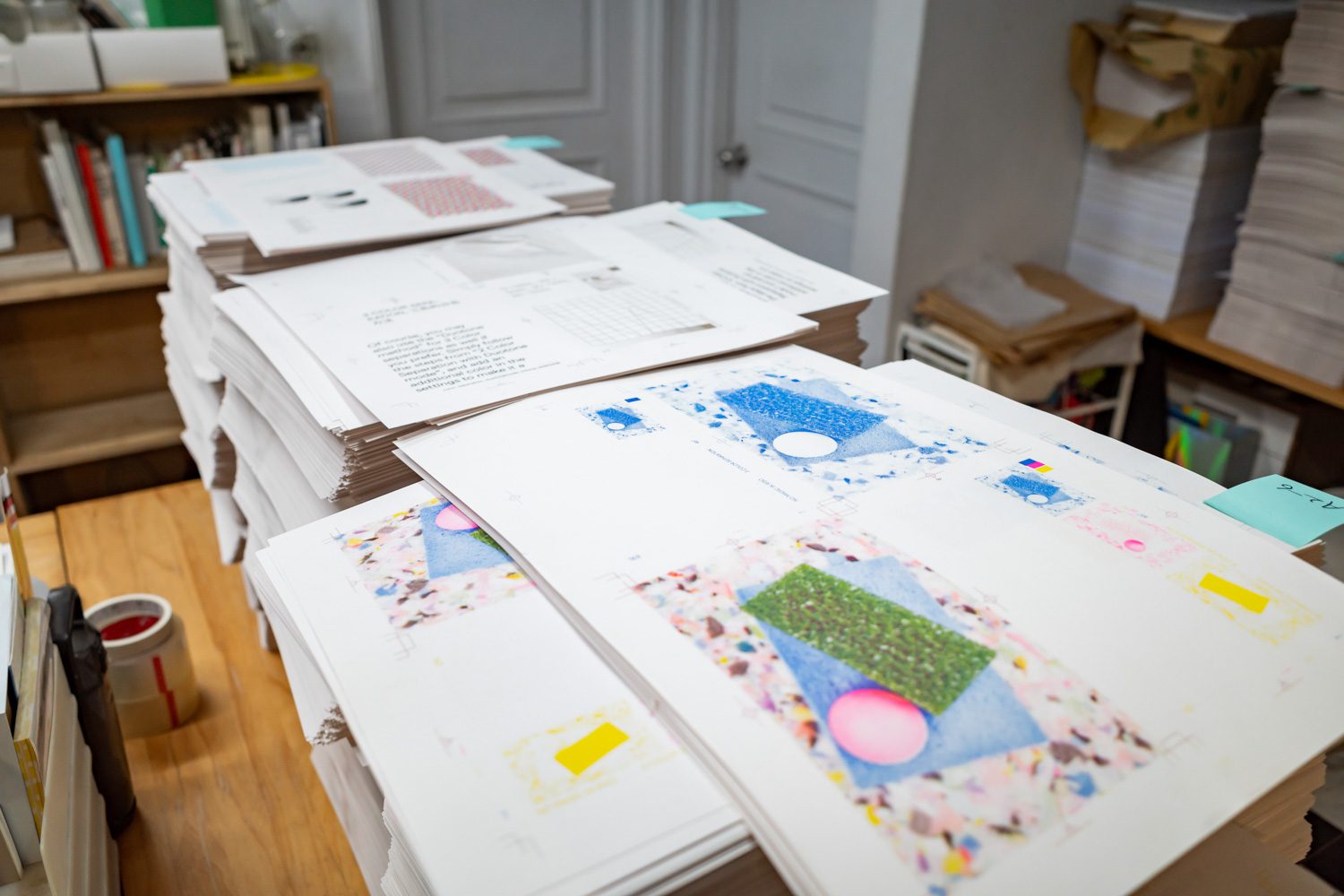
art4d: What are the challenges of working with Risograph?
PL: There are numerous challenges working with the Risograph, starting with the limited and high cost of ink, the need for frequent maintenance of the Risograph printer, and the expense of paper as well. Most of the paper we use is imported from Europe and Japan. The reason is that imported paper has higher quality compared to the paper produced in Taiwan, thanks to the climate being more suitable for paper production. When considering the proportions, only 20% of the paper we use is sourced locally in Taiwan, while the remaining 80% is imported from Europe and Japan. Moreover, most paper factories require us to place large orders, leading to similar prices for both Taiwanese and imported paper as well.
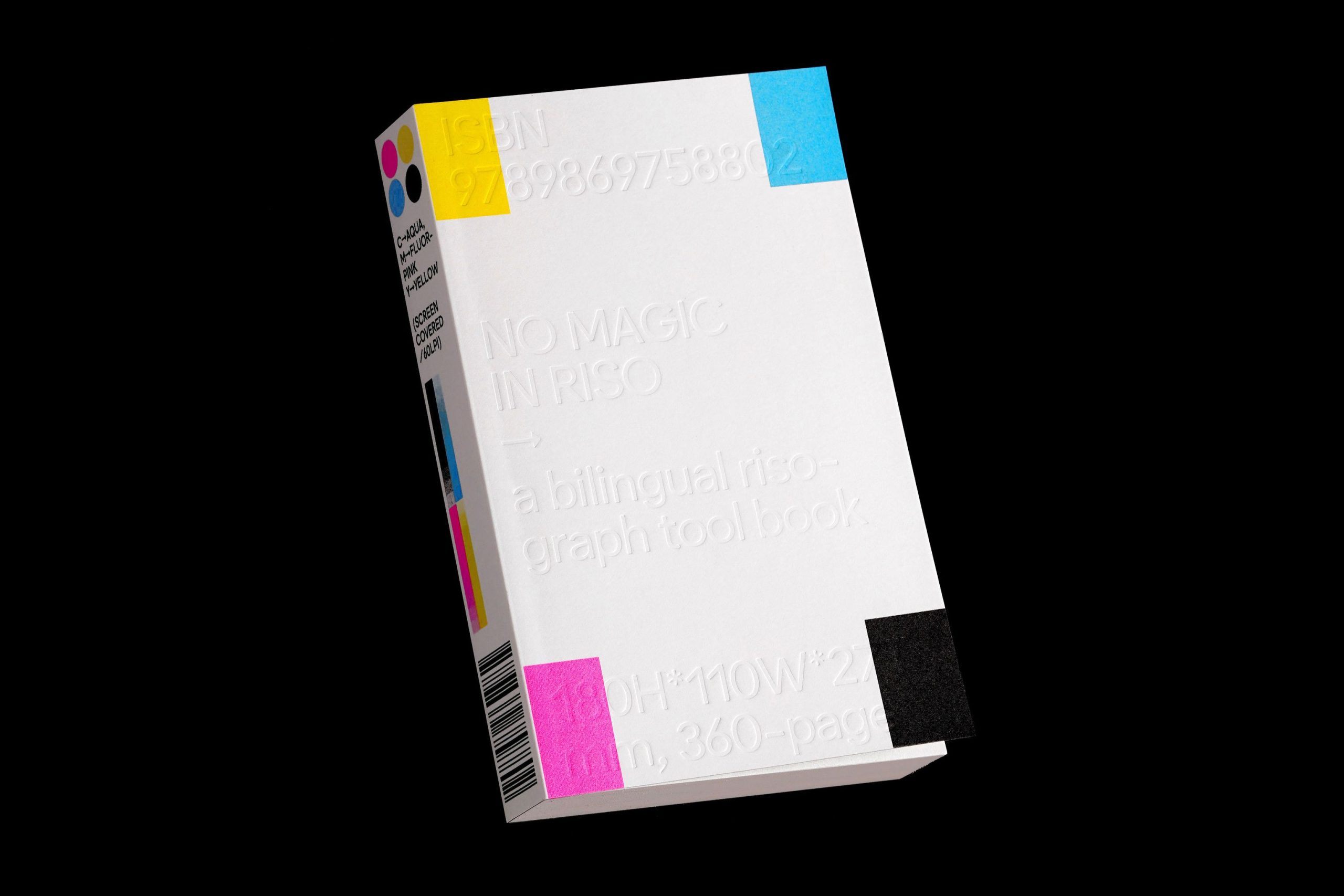
Photo courtesy of O.OO Studio
art4d: Could you share the backstory of the book ‘No Magic in Riso’?
PL: ‘No Magic in Riso’ evolved from our research and experimentation with Risograph printing, akin to a sequel to our first book, ‘The Imperfection Booklets,’ created in 2016, and served as an introductory guide to Risograph printing and its essence. In our second volume, we took a deeper dive into the printing process, choosing to omit textual explanations in favor of tangible experimentation. This endeavor required a significant investment of resources: 74 tubes of Risograph ink, a 660-page manuscript, 695,000 sheets of paper, 2 Risograph printers, a team of 4 staff, and 3 electric fans!
‘No Magic in Riso’ acts as a comprehensive manual for Risograph printing, allowing people to explore and innovate independently. Its contents cover everything from color separation techniques to color selection and blending, allowing users to streamline their trial-and-error processes.
However, it’s worth noting that this book cannot precisely define what constitutes as ‘correct’ Risograph printing, since there is no such thing as one definitive answer!
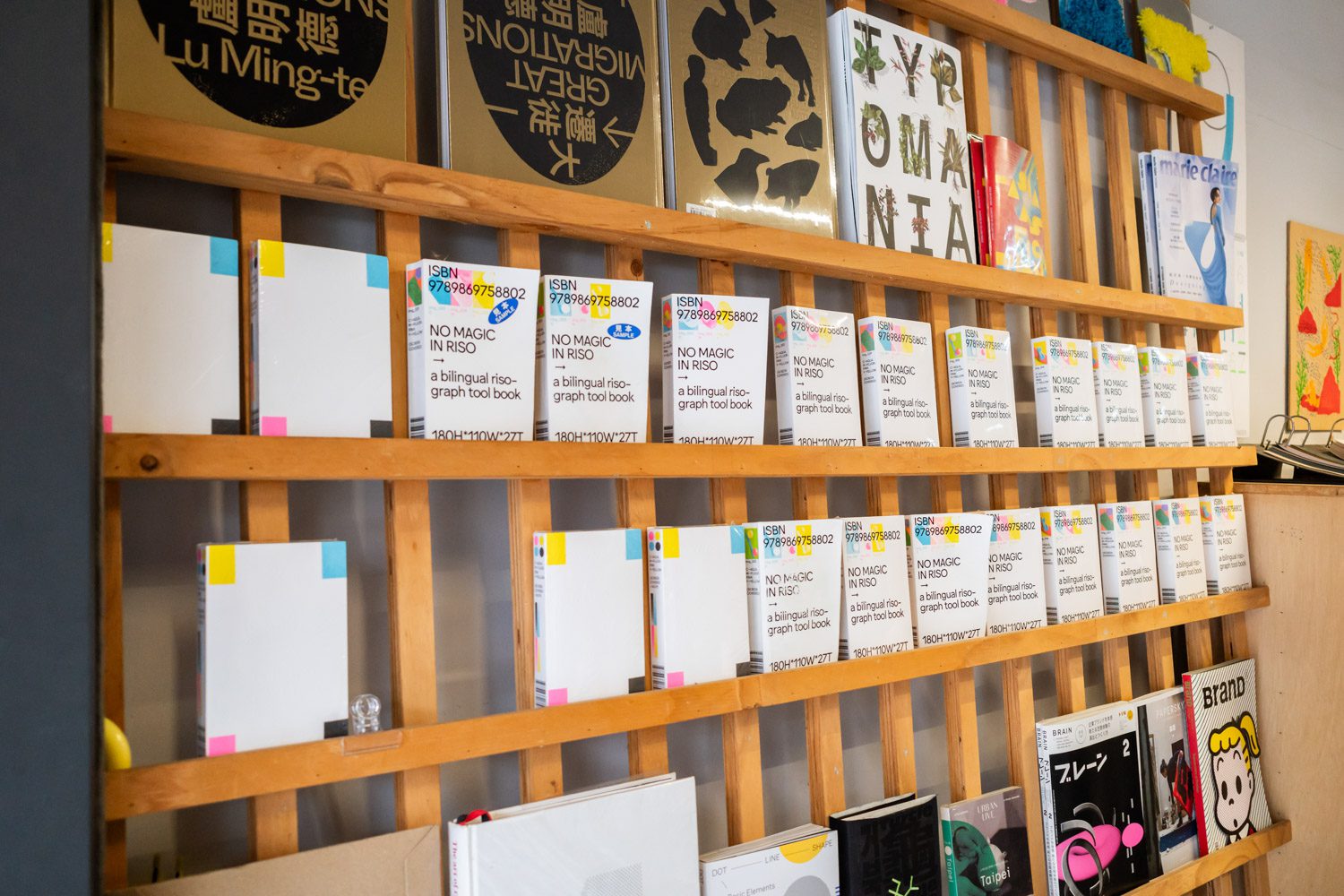
For those who are interested, ‘No Magic in Riso’ is available at the price of 1,600THB at art4d Facebook inbox / tel. 02-2602606
odotoo.com
facebook.com/odotoostudio
instagram.com/odotoo_com


